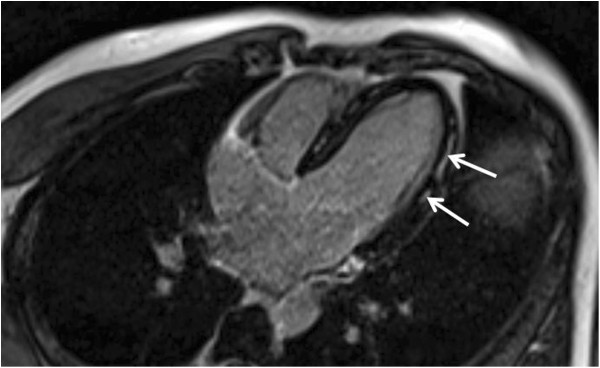Playlist
Show Playlist
Hide Playlist
Myocarditis: Pathophysiology and Pathology
-
Slides Myocarditis Pericarditis.pdf
-
Reference List Pathology.pdf
-
Download Lecture Overview
00:00 What does it look like? This is a good example of a lymphocytic myocarditis. This is actually a fairly aggressive lymphocytic myocarditis. All the pink cells down there are going to be myocytes. All of the blue cells, all the blue nuclei are going to be, for the most part, T-cells and monocyte macrophage lineage. And they are causing a lot of dysfunction. There is some increased edema. Another end of the spectrum. So myocarditis, lymphocytic myocarditis can be from very focal disease to very aggressive disease. 00:32 On the aggressive end of the spectrum is so-called giant cell myocarditis where you get such extensive damage and such extensive production of mediators such as interferon gamma that you get macrophage fusion. When the macrophages fuse, they form multinucleated giant cells that we can recognize on biopsy or on autopsy. So this is just one end of the spectrum of the lymphocytic myocarditis. And then you can have immune checkpoint myocarditis. Increasingly, we give antibodies that block the cellular ligands that are important in regulating immune responses. So antibodies against CTLA-4, antibodies against the program death ligand, PD-L1. So we have a variety of antibodies and when we set the immune system loose to attack tumors, it turns out we also, in a subset of patients who are predisposed to autoimmune myocarditis, set those same cells loose to attack the heart. So we can see a myocarditis and in about half a percent of patients it can be a lethal complication at getting immune checkpoint innovation. 01:51 Other forms of myocarditis. So this is one associated with Lyme disease. There is nothing really particular about this being Lyme disease except that we could demonstrate the borrelia, the little spirochetes with special stains. And that's the only reason that we particularly knew this was a Lyme myocarditis. It is a mononuclear cell inflammatory infiltrate destroying the underlying myocardium. This is another lesion, this is hypersensitivity myocarditis. This is due to any of a variety of drugs, not illicit drugs but therapeutic drugs. Antibiotics, antihypertensives, almost every category of drug that you're familiar with in a susceptible host can induce an eosinophilic-rich response. 02:35 And the eosinophilic-rich response if it becomes too robust can actually cause a lethal hypersensitivity myocarditis. Most of the time we see this is an incidental finding, we stop the drug and it goes away but in some cases it can be fatal. This is just an example of Chagasic myocarditis. We're seeing the amastigotes associated with the organism and they are invading and actually going to eventually cause lysis of that cardiac myocyte. They are expressing on the surface of the cell though some Chagasic antigens that could be recognized by the T-cell, by the host immune system and so we will have a combination of a parasitic myocarditis exacerbated by the inflammatory response. 03:27 They classically, in Chagis myocarditis associated with Trypanosoma cruzi we get involvement of the conduction system so these patients will present with arrhythmias. 03:37 But they also, for reasons that are obscured to me maybe you know, they develop apical aneurysms and this is just showing you a transillumination of an apical aneurysm of patient with very severe Chagasic myocarditis.
About the Lecture
The lecture Myocarditis: Pathophysiology and Pathology by Richard Mitchell, MD, PhD is from the course Myocarditis and Pericarditis.
Included Quiz Questions
Which histopathologic finding in myocarditis is consistent with macrophage fusion?
- Giant cell myocarditis
- Lymphocytic myocarditis
- Immune checkpoint myocarditis
- Eosinophilic myocarditis
- Lyme myocarditis
What finding is classic for Chagas myocarditis?
- Apical aneurysm
- Myocardial infarction
- First-degree heart block
- Third-degree heart block
- Atrial aneurysm
Customer reviews
5,0 of 5 stars
| 5 Stars |
|
1 |
| 4 Stars |
|
0 |
| 3 Stars |
|
0 |
| 2 Stars |
|
0 |
| 1 Star |
|
0 |
1 customer review without text
1 user review without text




